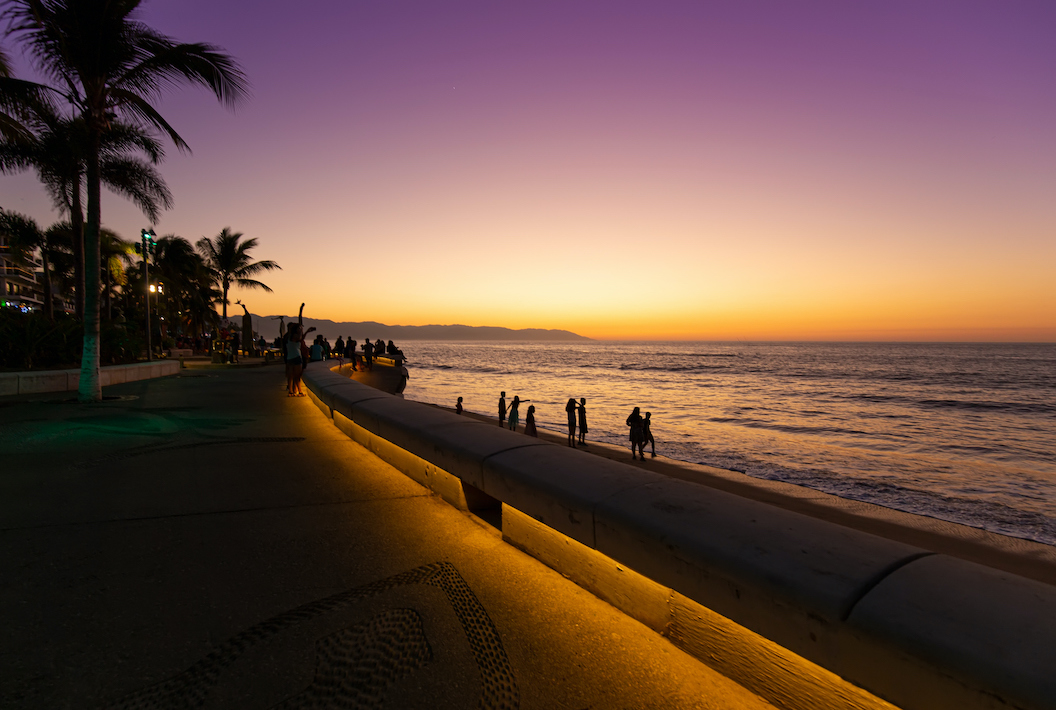
PUERTO VALLARTA (Mexico) – It’s dawn. The sun barely peeks over the distant horizon, shifting from red to a brilliant gold that lights up the sleepy sky. The waves lap gently, the breeze whispers like soft music. A few early risers, or those who couldn’t sleep, are already strolling leisurely along the beach, where seaweed mingles with sand and pebbles. Suddenly, a man holding a woman’s hand stops. He kneels on one knee, hands clasped together, offering something to the woman, who looks startled and surprised—but delighted. Ah, of course—the man is proposing to her, pleading under the morning sun as his witness. With the sky above, the sea and sand below, who knows what promises he’s making, but one can only imagine he’s vowing a lifetime of happiness. She hugs him, visibly excited, and they merge into one as the waves rise to wet their feet.
And as if planned, a young woman in a flowing red dress glides across the sand, drawing music from her dark violin. It turns out that the man arranged it all—this elaborate proposal scene in the romantic setting of a misty morning, complete with the ring (likely with a dazzling diamond) and a serenade to charm his beloved. Onlookers, inspired by the couple’s happiness, applaud and cheer, saying, “Buena Felicidad!” Just ten minutes away stands the historic “Our Lady of Guadalupe” church, crowned with its famous bell tower. Whether these two young hearts, now beating as one, will go there to receive blessings remains their secret. But, as the modern saying goes, “If you’re getting married, do it soon, before someone else does!”

It’s a sight more beautiful than anything imaginable, witnessing a scene like this at dawn on El Malecón beach in Puerto Vallarta. While Vietnam’s Vũng Tàu has separate Front and Back beaches, here El Malecón combines everything into one, stretching along the entire coastal city. From tranquil, serene waters to the lively, bustling waves crashing against the shore, El Malecón offers something for everyone. For retirees, with a life of leisure—if not preoccupied by three big “ifs”: watching the grandkids, frequent doctor visits, or tight retirement funds—what better ways to spend time than watching Korean dramas and traveling? Indeed, it’s just a three-hour flight from San Diego over Cabo San Lucas to Puerto Vallarta (PVR), Mexico’s famous resort city.
A series of hotels, both large and small, line the city’s main road from the airport without disturbing the idyllic beauty of Puerto Vallarta’s scenery. Mexicans love bright colors, and their homes are painted in bold hues—reds, greens, and whites—as vibrant as their traditional attire.
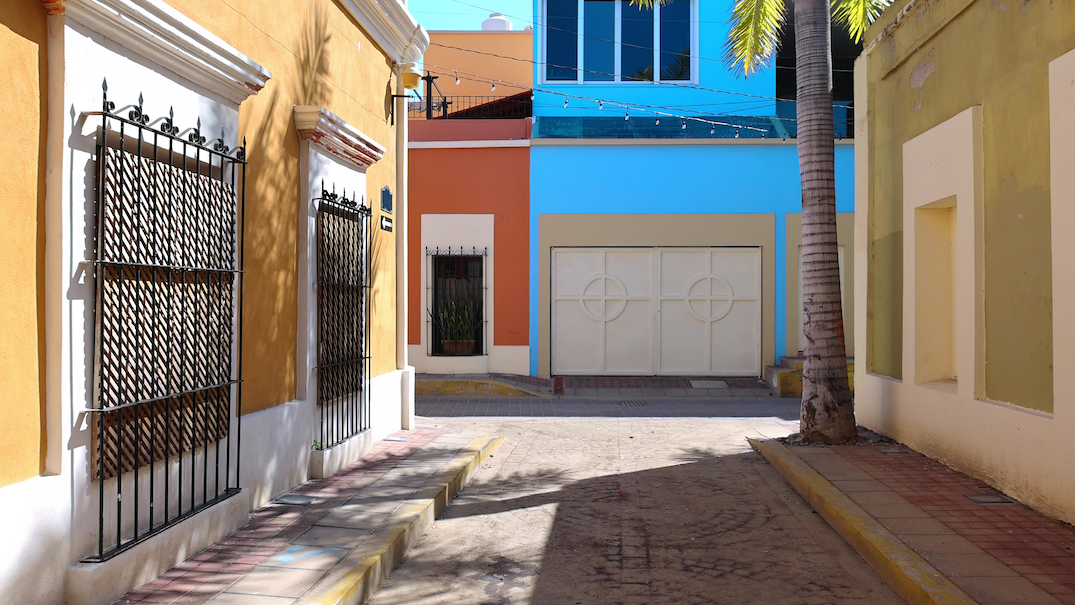
While parts of El Malecón offer fine white sand and gentle waves, others are rockier with strong waves. Visitors can swim or soak in the water wherever they wish, though the shaded lounge chairs are reserved for guests of adjacent hotels. Occasionally, street vendors sell sunglasses, souvenirs, wide-brimmed hats, or inflatable animal balloons for children—but no food or drink vendors are seen on the beach. For an authentic Mexican experience with tacos, salsa, empanadas, quesadillas, or tamales, washed down with a Margarita or a Michelada, or even a Michelob, Corona, or Modelo beer, a short stroll to the nearby restaurants is a must. The main street is packed with countless eateries, patiently inviting tourists without the aggressive solicitations often found at the airport.
There’s something peculiar here, though—you can hardly go a few steps without seeing a pharmacy, marked with signs reading “botica” or “farmacia.” These stores sell all sorts of medicines without a prescription, some reportedly up to 80% cheaper than in the U.S., making tourists some of their best customers. Interspersed among the eateries and bars are souvenir shops, jewelry stores, clothing and footwear shops, and quaint craft stores. Art galleries occasionally pop up, preserving Mexican cultural heritage with folk art displays. Due to Puerto Vallarta’s tropical climate, public restrooms, or “baños,” are strategically located to serve those who’ve had one too many drinks. In English, we have many words for restrooms—bathroom, restroom, washroom, lavatory, WC—but in Mexico, there’s just one: “baños.” For a few pesos, you’re relieved and ready to continue exploring. Be cautious, though; just like in the U.S., driving under the influence is heavily penalized.
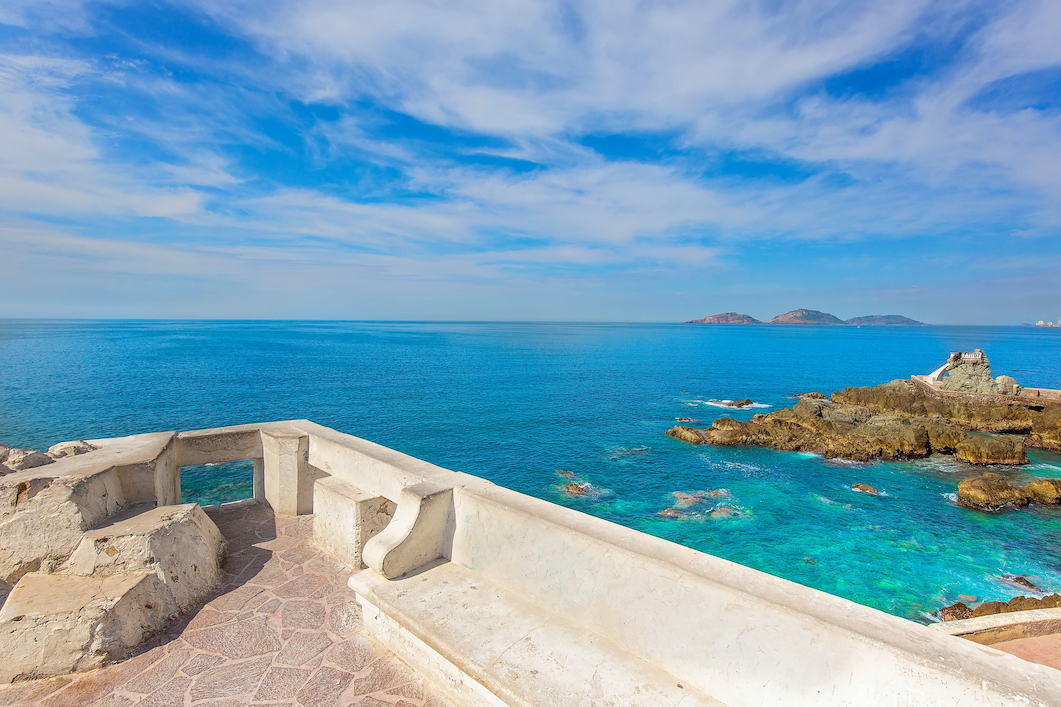
“El Malecón,” in English, translates to a boardwalk, the wooden path that stretches along the beach for pedestrians. However, here “El Malecón” refers to an entire beach area in Puerto Vallarta, extending over a mile from Centro to the Los Muertos Beach Pier. Visiting Puerto Vallarta means you must experience El Malecón, just like a visit to Southern California calls for a bowl of phở at Bolsa. Unlike its name, the walkway is paved with cobblestone, giving it a rustic charm. Adorning this beachfront path are large bronze sculptures by Mexican artists, often inspired by folk tales and legends. Adding to the ambiance, street musicians play traditional Mexican mariachi music with acoustic guitars. And then there’s the breathtaking, near heart-stopping “Danza de los Voladores” (Dance of the Flyers) performance—a highlight not to be missed.
At one point along the walk, you’ll find a figure crafted from sand, an old man with a wine glass in one hand, a chessboard at his side, and an empty chair. He sits, awaiting passersby to stop and play a game with him.
The Old Man and the Chessboard
Cuba has the sea, Santiago the fisherman, a small boat, and a battle with sharks in Hemingway’s “The Old Man and the Sea.” El Malecón, on the other hand, has an elderly man, dressed neatly, a chessboard, and a wine glass mid-raise, beside a bottle (presumably tequila). I stood for a while, observing this sand-colored figure facing the sea. It could have been concrete or plaster, sprayed with brown sand. But then, as I raised my camera to snap a photo, the old man smiled! Not a statue, but a live person, sitting motionless for hours, posing for tourists to capture memorable photos. When he smiled, I said, “Hola!” He blinked as if to acknowledge. I mimicked raising an imaginary glass to my lips; he gently raised his own glass to his lips like a robot, smiling. I clasped my hands and gave a respectful nod, thanking him with a North Vietnamese-accented Spanish, “Buen Día – Have a good day.” He responded with a slight bow. Beneath him was a sand-crafted tip box, inviting kind donations.
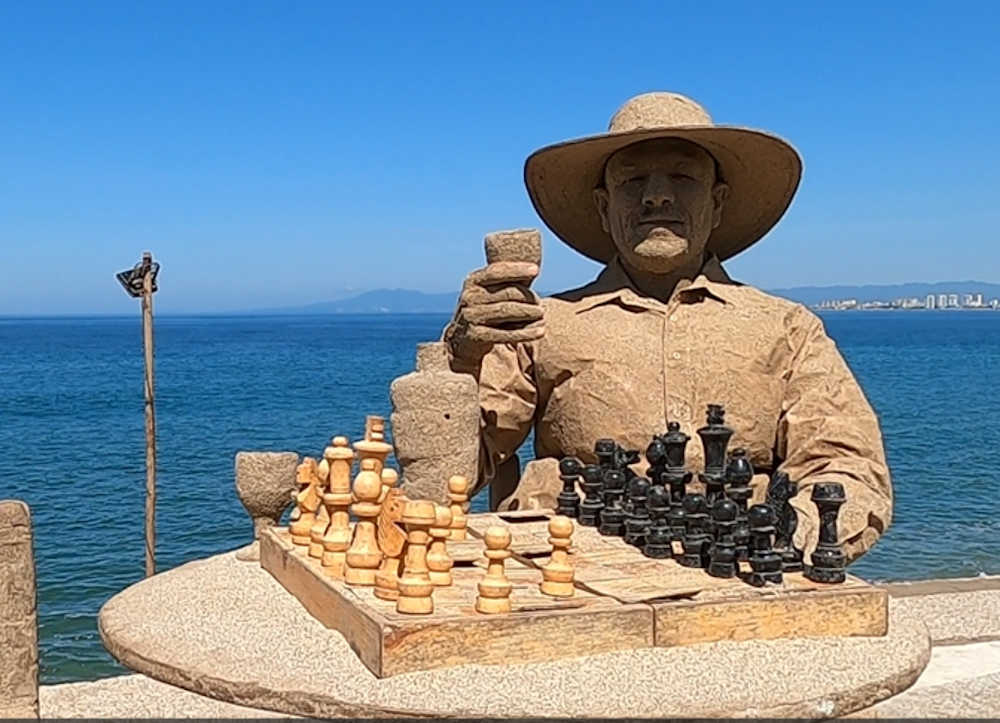
The Old Man and the Chess Game – Photo by Duc Ha
As I walked away, my mother’s words echoed in my mind: seeing a wedding early in the morning brings bad luck. But today was just a proposal, not yet an engagement, so no harm done. With that optimistic thought, I continued toward the rocky pier named, rather ominously, “Muelle de Playa Los Muertos” – The Pier of the Dead. Google reveals that this site was once a cemetery for the native people, and when the graves were moved, many bones were found. Though the graves are gone, the name endures. This pier doesn’t stretch straight like the Santa Monica Pier or the Santa Cruz Wharf in California; it curves slightly and ends with a giant sail. Visitors can stroll along, gaze out over the ocean, listen to the waves hitting the pier, and breathe in the fresh, salty air. At the pier’s end—where the water is deep—motorboats dock for tourists seeking adventures, like watching flying fish. Who knows, you might even encounter the ghost of Santiago, drifting along with his boat and pursued by sharks. Jet skis and paragliding services are also available for thrill-seekers.
Puerto Vallarta offers more than just El Malecón and its historic churches. The city’s Old Town – Centro Vallarta, the famous Vallarta Botanic Garden, and Jardin Mágico’s Butterfly Sanctuary are all worth exploring. The Botanical Garden is a vibrant display of Mexico’s flora, housing hundreds of species of orchids. Near the botanical garden lies the butterfly sanctuary, home to over 3,000 butterflies across 20 species. Further exploration reveals villages nestled along the lazy Cuale River, sometimes graced by Mexican cowboys—“vaqueros”—in wide sombreros and colorful ponchos. Unlike their often-villainous Hollywood portrayals, these vaqueros carry only ropes, not guns.
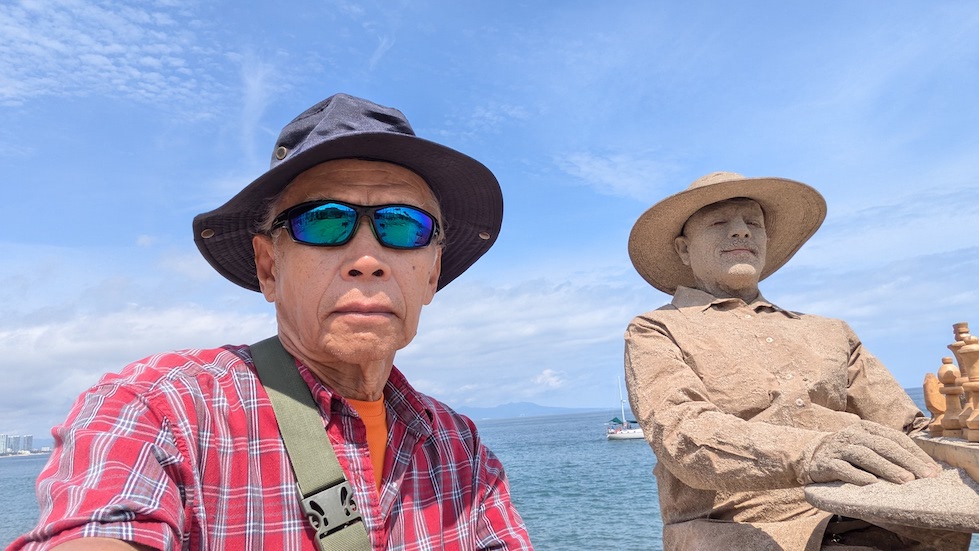
Leaving the “wild west” of Puerto Vallarta, tourists return to the lively music and dance performances of open-air stages during local festivals. In early November each year, Mexico celebrates “Dia de los Muertos” – the Day of the Dead, to honor loved ones who’ve passed on. But unlike Vietnam’s solemn ceremonies, Mexicans dress up as skeletons and fill the streets with song and dance. It’s a time for the living and the dead to meet and celebrate, for as they say, we’ll all meet again one day—hopefully in a better place. But who’s returned to tell us for sure?
Indeed, El Malecón in Puerto Vallarta offers endless sights and experiences, an unforgettable place full of art, music, culture, and natural beauty. But amid it all, don’t forget to steal a moment for a sip of tequila—to savor life and forget its worries.
Đức Hà
Exclusive for HuuTri.org
